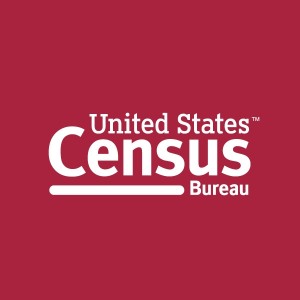From the Census Bureau:
 The United States Senate confirmed John H. Thompson on August 1 as the new director of the U.S. Census Bureau by unanimous consent. Thompson, who was nominated by President Obama on May 23, 2013 has been an executive at the National Opinion Research Center for the past 11 years, serving as president and CEO since 2008.
The United States Senate confirmed John H. Thompson on August 1 as the new director of the U.S. Census Bureau by unanimous consent. Thompson, who was nominated by President Obama on May 23, 2013 has been an executive at the National Opinion Research Center for the past 11 years, serving as president and CEO since 2008.
Before joining NORC at the University of Chicago, Thompson was a Census Bureau employee from 1975 to 2002 and oversaw the 2000 Census. He succeeds Robert Groves, who left office in August 2012 to become provost of Georgetown University. Following the departure of Groves, former Deputy Director Thomas L. Mesenbourg served as Acting Director. Mesenbourg had previously announced his long-planned retirement, which is effective August 2.
As Census Bureau Director, Thompson will oversee the nearly 180 surveys the Census Bureau conducts annually. He takes office at a critical juncture in the planning process for the 2020 Census, as the agency begins researching and testing new and more cost-effective methods that potentially will save billions of dollars.
“I congratulate John Thompson on his confirmation as director of the U.S. Census Bureau, and thank the U.S. Senate for confirming him quickly. Given his previous roles at the Census Bureau beginning in the 1970s, I have full confidence that Mr. Thompson will be a tremendous leader of one of the nation’s premier statistical agencies,” said Secretary of Commerce Penny Pritzker.
“The Census Bureau produces a wealth of data that are critical to America’s public and private sector leaders as they make decisions about economic development that will create jobs. I am committed to ensuring that the Census Bureau has the resources it needs to continue supplying essential data to businesses and government leaders. I look forward to working with John Thompson and his team as they undertake the years of preparations required for a successful 2020 Census and continue to develop innovative ways to produce and distribute vital information,” added Secretary Pritzker.
“It’s a tremendous honor and privilege to return to public service as the Director of the Census Bureau, one of the most important organizations in the federal statistical system, as well as a place that holds warm memories for me,” said Thompson. “As America forges its data-driven future, the Census Bureau must lead the way by tracking emerging trends, developing more efficient processes and embracing new technologies for planning and executing the 2020 Census and its other surveys that are so important to the nation. As Director, I will use all of my skills, intellect and experience to foster a culture of innovation and adaptability that allows the Census Bureau to serve the public’s needs and meet the challenges of this dynamic new environment.”
Thompson participated on 2010 Census design and review panels sponsored by the Committee on National Statistics. He is also an elected fellow of the American Statistical Association, and has been elected to serve a three-year term as a member of the Committee on National Statistics at the National Academies of Science. He holds bachelor’s and master’s degrees in mathematics from Virginia Tech.

 The
The 

